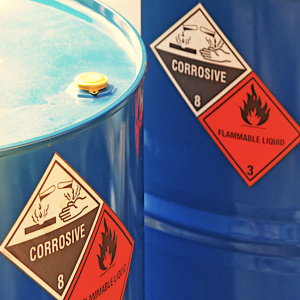Want to experience the greatest in board studying? Check out our interactive question bank podcast- the FIRST of its kind here: emrapidbombs.supercast.com
Author: Christopher Musselwhite, MD
Peer Reviewer: Blake Briggs MD, Travis Smith, DO
Objectives: Discuss the pathophysiology, presentation, diagnosis, and management of salicylate overdose.
Introduction– Planting the Seed
Salicylates, as willow bark, have been used for untold millennia as a cure-all. Several modern, synthesized versions permeate our pharmacy shelves, including aspirin, Pepto Bismol, oil of wintergreen, BC, or Goody’s Powder. These drugs are easily obtained, making salicylate overdose, either acutely intentional or chronically accidental, something all emergency medicine providers should be familiar with recognizing and treating.
Pathophysiology– The Root of All Evil
Salicylate’s therapeutic target is the cyclooxygenase enzyme (COX). By irreversibly inhibiting COX, salicylates decrease platelet aggregation by reducing thromboxane and reduce pain and inflammation through decreasing prostaglandin production.
However, you can have too much of a good thing! The acute toxic dose is 150mg/kg, which works out to 10-30g in adults and 3g in children. Salicylate levels > 40 mg/dL are considered toxic. Still, serum levels can rise or fall with serum pH, reflecting changes in elimination or distribution, and cannot be used to correlate with toxicity directly.
Here’s the critical chemistry you must understand to know how to treat salicylate overdose: salicylate is a weak acid. At low pH, more of the drug is uncharged, able to pass through cellular membranes. At a higher pH, more of the drug is charged and unable to pass through membranes, which make it essentially “trapped.” A trapped drug is a good thing. A trapped, charged drug is unable to enter the brain.
Accelerate your learning with our EM Question Bank Podcast
- Rapid learning
- Interactive questions and answers
- new episodes every week
- Become a valuable supporter
Clinical Presentation– A Season of Change
As salicylate levels increase in the CNS, they directly activate the respiratory center in the medulla, creating fast, deep breathing in the patient. A respiratory alkalosis ensues as the patient blows off carbon dioxide. Secondarily, salicylates uncouple oxidative phosphorylation, resulting in an anion gap metabolic acidosis from lactate and ketoacids. A small percentage may present early enough to have only a respiratory alkalosis, and pediatric patients may never have a respiratory alkalosis due to their smaller lung volumes.
Some patients, especially elderly or smokers, will develop non-cardiogenic pulmonary edema, likely secondary to prolonged tachypnea and hyperpnea damaging alveoli.

Patients will also experience nausea and vomiting, as salicylates are highly irritating to the gastric mucosa. However, gastric hemorrhage in acute toxicity is rare. Gastric ulcers are more frequently associated with long term therapeutic use.
Tinnitus is a classic, common symptom and thankfully is reversed with the resolution of toxicity.
Other CNS symptoms include confusion, agitation, lethargy, seizures, and cerebral edema. CNS symptoms are thought to arise from CNS hypoglycemia, and studies have shown reversal of CNS symptoms after glucose infusion.
Management– Pruning the Hedges
Activated charcoal at 1g/kg up to 50g can be given and indicated if the ingestion occurred no longer than 2 hours prior to the presentation, with the usual caveats regarding the use of activated charcoal and the risk of aspiration (patient awake, alert, able to follow commands, and is willing to take charcoal).
Fluid resuscitation needs to be judicious. Patients will be initially dehydrated from vomiting and increased insensible respiratory losses but can quickly become volume overloaded with pulmonary or cerebral edema (see above). There is no need for “forced diuresis,” as elimination is based on urinary pH, not urinary flow.
Alkalinization is the mainstay of treatment. It traps ionic salicylate and prevents its passage through membranes. In doing so, it decreases the amount of salicylate in the CNS. The kidneys efficiently excrete charged ions, so “trapping” the ionic salicylate from escaping urinary tubules increases its elimination in the urine.
Alkalinization is accomplished with sodium bicarbonate given 1-2meq/kg as a bolus followed by 100-150meq in 1L D5W at 1.5-2x of the maintenance rate.
Both the urinary pH and the serum pH need to be followed at 1-hour intervals to titrate the sodium bicarbonate drip (urine pH goal 7.5-8, serum pH limit <7.6).
Studies have shown that raising the urine pH from 6.5 to 8.1 increases salicylate excretion more than 5-fold! Remember to aggressively replete potassium as hypokalemia will cause potassium ions to be exchanged in urinary tubules for hydrogen ions, thus lowering urinary pH and decreasing salicylate excretion.
Hemodialysis is reserved for selected cases. In reality, look at these criteria, and you tell us how easy it would be to initiate dialysis in some of your patients that present with salicylate overdose:
– altered mental status
– cerebral edema
– pulmonary edema
– renal failure (Cr 2, GFR <45)
– severe acidemia (<7.2)
– salicylate level >100mg/dL acute, >60mg/dL chronic.
Our approach? We consult nephrology early on. All these patients will go to the ICU, so calling nephrology first will not only helps your ICU colleagues if the patient needs dialysis later but already gets the ball rolling in the right direction if your patient ends up requiring emergent hemodialysis.
Do you intubate them? … Do you want to kill your patient?
Intubation in the salicylate overdose should be reserved for only the most dire of circumstances. Any relative respiratory acidosis from apneic time or mechanical ventilation will worsen salicylate toxicity. If intubation is absolutely necessary, try to perform an awake intubation, and ensure first-pass success. Optimize everything and approach with the utmost caution. Ensure your vent settings attempt to match as much as possible the minute ventilation prior to intubation and avoid paralytics.
References
1. Palmer BF, Clegg DJ. Salicylate Toxicity. N Engl J Med. 2020 Jun 25;382(26):2544-2555. doi: 10.1056/NEJMra2010852. PMID: 32579814.
2. Durnas C, Cusack BJ. Salicylate intoxication in the elderly. Recognition and recommendations on how to prevent it. Drugs Aging. 1992 Jan-Feb;2(1):20-34. doi: 10.2165/00002512-199202010-00004. PMID: 1554971.
3. Stolzberg D, Chen GD, Allman BL, Salvi RJ. Salicylate-induced peripheral auditory changes and tonotopic reorganization of auditory cortex. Neuroscience. 2011 Apr 28;180:157-64. doi: 10.1016/j.neuroscience.2011.02.005. Epub 2011 Feb 23. PMID: 21310217; PMCID: PMC3070811.
4. Mukerji V, Alpert MA, Flaker GC, Beach CL, Weber RD. Cardiac conduction abnormalities and atrial arrhythmias associated with salicylate toxicity. Pharmacotherapy. 1986 Jan-Feb;6(1):41-3. doi: 10.1002/j.1875-9114.1986.tb03449.x. PMID: 3952006.
5. Rocha GM, Michea LF, Peters EM, Kirby M, Xu Y, Ferguson DR, Burg MB. Direct toxicity of nonsteroidal antiinflammatory drugs for renal medullary cells. Proc Natl Acad Sci U S A. 2001 Apr 24;98(9):5317-22. doi: 10.1073/pnas.091057698. PMID: 11320259; PMCID: PMC33207.
6. Minns AB, Cantrell FL, Clark RF. Death due to acute salicylate intoxication despite dialysis. J Emerg Med. 2011 May;40(5):515-7. doi: 10.1016/j.jemermed.2010.02.015. Epub 2010 Mar 29. PMID: 20347249.
7. Duffens KR, Smilkstein MJ, Bessen HA, Rumack BH. Falsely elevated salicylate levels due to diflunisal overdose. J Emerg Med. 1987 Nov-Dec;5(6):499-503. doi: 10.1016/0736-4679(87)90213-7. PMID: 3429821.
8. Kuna ST, Levine S. Relationship between cyclooxygenase activity (COA) inhibition and stimulation of ventilation by salicylate. J Pharmacol Exp Ther. 1981 Dec;219(3):723-30. PMID: 6795342.



